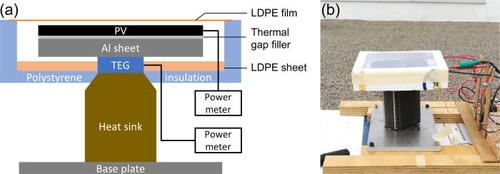A team of engineers at Stanford University has created a solar cell that generates electricity at night by exploiting temperature differences between the cell and the air. Photovoltaic systems that can harvest energy in darkness could reduce the need for batteries that store electricity generated during the day, potentially leading to greater electricity access for rural communities across the planet.
Although solar cells have become more efficient and affordable over the past two decades, the technology still suffers the obvious limitation of not being able to harvest energy from the sun after it sets. But there’s another natural phenomenon that solar cell systems could exploit for energy: radiative cooling.
Radiative cooling is the process by which objects lose heat through thermal radiation. At night, solar cells (and other objects on Earth) radiate heat toward outer space, which causes the solar cells to become slightly cooler than the air around them.
In a paper published in Applied Physics Letters, the Stanford team described how they built a low-cost system that uses a thermoelectric generator to convert those slight temperature differences into electricity, a process described by the Seebeck effect. The setup essentially reverses how solar cells operate during the day, as Jeremy Munday, a professor in the Department of Electrical and Computer Engineering at UC Davis, told UC Davis News in 2020.
“A regular solar cell generates power by absorbing sunlight, which causes a voltage to appear across the device and for current to flow,” Munday said.
“In these new devices, light is instead emitted and the current and voltage go in the opposite direction, but you still generate power. You have to use different materials, but the physics is the same.”
The new system can generate 50 milliwatts per square meter on a clear night. That output represents a significant improvement over similar previous systems, though the new setup would still require about 20 square meters of solar cells to power conventional lights. But considering the system was built with off-the-shelf components, it’s likely that incorporating specially engineered parts would boost electricity production.

Expanding access to electricity
Approximately 770 million people currently live without reliable access to electricity, mostly in Asia and Africa, according to the International Energy Agency. And while the costs of installing and operating renewables like solar have been falling over the past decade, it’s still usually cheaper to build new fossil fuel plants than new renewable energy infrastructure, particularly in developing countries. Buying batteries to store solar-generated power raises those costs even higher.
Finding affordable ways to extend the harvesting time of solar cells could make solar a more viable option for people who live far away from major grids.
“In many rural areas dependent on mini-grid or off-grid systems, providing power during the nighttime often necessitates substantial additional battery storage installation, which adds significant system complexities,” the authors wrote. “Our approach can provide nighttime standby lighting and power in off-grid and mini-grid applications, where [solar] cell installations are gaining popularity.”
We’d love to hear from you! If you have a comment about this article or if you have a tip for a future Freethink story, please email us at [email protected].






